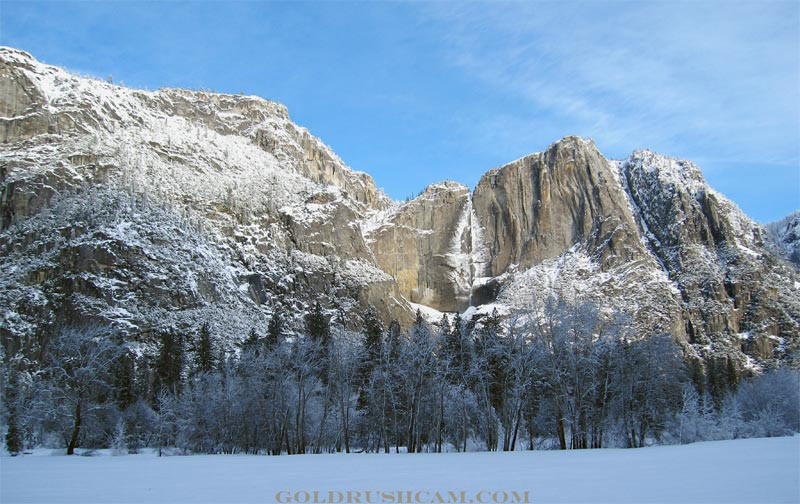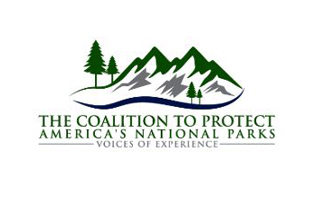
Winter in Yosemite
Sierra Sun Times file photo
Park Impact Survey Summary of Results
February 8, 2019 - The Coalition to Protect America’s National Parks (Coalition) represents over 1,600 current, former, and retired employees and volunteers of the National Park Service. The 
Relying on their expertise as stewards of our national parks, Coalition members recently conducted surveys of national parks across the country during the partial government shutdown. They observed and recorded specific impacts to these national parks that can be attributed to the shutdown, using guidance provided by the Coalition to Protect America’s National Parks and the Institute for Parks, People and Biodiversity at the University of California, Berkeley. The information provided in this summary is a synopsis of the data the Coalition received.
Coalition members observed impacts at the following national parks: Apostle Islands National Lakeshore, Big Bend National Park, Blue Ridge Parkway, Cape Cod National Seashore, De Soto National Memorial, Fort Frederica National Monument, Great Smoky Mountains National Park, Harpers Ferry National Historical Park, Hawai’i Volcanoes National Park, Keweenaw National Historical Park, Point Reyes National Seashore, Redwood National Park, Shenandoah National Park, Yosemite National Park, Zion National Park, and national parks in the Washington, D.C. area.
Work Not Getting Done
Operations at surveyed national parks were negatively impacted in many ways. During the shutdown, there were no visitor service programs, no entrance fee collections, no removal of invasive species, and no routine and/or preventative maintenance of museum collections, historic structures, roads, trails, etc. by NPS staff. Most regularly operating facilities, including restrooms, were closed.
Regular park maintenance was not completed, which was particularly harmful and dangerous in several parks that experienced weather events. At the Blue Ridge Parkway and Shenandoah National Park, roadways were closed due to snow and ice, and downed trees. At Point Reyes National Seashore, downed tree limbs on roads and trails were not cleared. Big Bend National Park lost a significant amount of ongoing volunteer support in maintaining recently planted native vegetation, and the removal of graffiti as well as fallen trees blocking trails.
In addition to these immediate, real-time impacts to visitors and parks during the shutdown, the loss of planning and preparation time during the shutdown will impact operations at national parks for the foreseeable future.
Delays in seasonal hiring are likely to cause serious staffing shortages, particularly in those parks with busy summer seasons. This concern was mentioned specifically to surveyors at such parks as varied as Redwood National Park, Cape Cod National Seashore, Harpers Ferry National Historical Park and Yosemite National Park, highlighting its likely ubiquity.
At national parks that used fee money to fund shutdown operations, long-term projects that are dependent on that fee money may be at risk. At Shenandoah National Park, for example, the park used fee money to bring in maintenance employees to catch up on trash removal and restroom cleanup and rehabilitation.
Ongoing research has been eliminated or compromised. At Redwood National Park, the ongoing research and monitoring of river and stream data is now at risk. At Yosemite National Park, a winter project to study rare foxes was canceled and several wildlife monitoring programs did not happen. Grant writing, conference participation, and publishing of data were all delayed or canceled.
Contract work was delayed in many parks, which will postpone regular park operations and negatively impact the park and local communities during their busy season. At Cape Cod National Seashore, major contract work to restore access to two heavily used beach areas damaged by coastal erosion was halted. Any delay in opening those beach areas in the spring will inflict serious hardship on visitors and local businesses.
In the Intermountain Region, and likely in other NPS regions, there has been a delay in court-ordered planning/NEPA actions. Power companies need NPS and Federal Energy Regulatory Commission compliance work, and that work was not being completed. Planning, Environment, and Public Comment, a system that allows parks to record projects and track their progress through compliance, in addition to creating an administrative record, was also shut down.
In all parks, Project Management Information System (PMIS) submissions were due in January to queue up for the FY 2021 NPS budget funding cycle. These submissions address funding needs in parks and Park Service programs. Many of these requests will have to be reshuffled and reprioritized, creating a large inefficiency in a system involving hundreds of millions of dollars. In addition, catching up on thousands of entries in the PMIS system will be a difficult, if not impossible, task as there is a March 1, 2019, contracting deadline to obligate FY 2019 funds.
Impacts to Park Natural and Cultural Resources
As media outlets covered throughout the shutdown, national parks across the country suffered from resource damage. In one of the most egregious acts of damage documented widely, a Joshua tree was struck and killed at the Ryan Campground at Joshua Tree National Park by an out-of-bounds vehicle. A full assessment of this harm will require considerable time and effort. A complete understanding of the damage may never be fully understood. However, our park surveyors did note negative impacts to resources at several parks.
At Big Bend National Park, there was damage to vegetation and water resources from illegal camping and trash accumulated at backcountry sites. Camping occurred in closed areas, despite signage and road closures, and one observer interviewed by a park surveyor described it as a “free-for-all.” There were dogs in sensitive habitats, which results in a variety of harmful impacts to wildlife. And there was serious damage to fragile desert vegetation and soils from illegal off-road travel.
At Point Reyes National Seashore, trash was spread out over parking areas and beaches. And at Yosemite National Park, trash, food scraps, and broken bottles were found in numerous locations, along with increased evidence of bear activity in picnic areas. This presents a risk to visitor safety and a risk of habituation to the bears. The surveyor at Yosemite National Park also documented a diesel tank leaking with no remedial planning available. Portable toilets had been vandalized and there was human waste visible. The Merced River dumping station was overflowing with frozen human waste on the ground.
Visitor Service Issues and Safety Concerns
Visitor services were severely reduced or unavailable at parks across the country. In addition, there were not enough NPS employees staffing the parks to ensure the safety of the resources or the visitors. At Yosemite National Park, for example, there were not enough park staff to ensure that visitors were not at risk due to intermittent rockfalls and snow-covered roads.
Redwood National Park remained open, but no visitor safety or orientation information was available at NPS facilities. There were high wind events that typically would have resulted in decisions to close impacted trails to ensure visitor safety; but without staff available, these trails were left open. Hazardous beach access points were unpatrolled either by NPS employees or members of the United States Coast Guard (who were furloughed also). International volunteers arrived as planned, but the limited park staffing situation meant they were unable to engage in the volunteer work they were meant to do.
At Cape Cod National Seashore, the park’s only visitor center was closed. The usually steady stream of local residents, school children, and off-season visitors who normally gather there had no option to visit. The heavily used public restrooms were closed and, as a result, public urination was observed as the park survey was being conducted.
At Point Reyes National Seashore, there should have been 70 volunteer wildlife docents in park areas with large concentrations of elephant seals. Without docents to keep the public separated from these huge and aggressive animals, which can reach 16 feet in length and weigh over 6,000 lbs., the park was forced to close the entire Drakes Beach area where the male elephant seals had come into the parking lot and threatened visitors.
Along the Blue Ridge Parkway, road closure warning signs were non-functional in at least one location where the Parkway was closed with physical barricades. The park’s website, out of date due to the shutdown, indicated that the road was open, creating a risk of collision with the barricades by unsuspecting motorists.
Employee Morale and Work and Family Conditions
National park staff who were surveyed by Coalition members indicated that they were fearful for visitor and resource safety during the shutdown. They were also concerned about downstream implications for their park and visitors due to delayed seasonal hiring, incomplete contracts, and other issues addressed in the first section of this summary.
Numerous park employees were deeply concerned about missing pay, despite the promise of backpay in the future. Human Resource staff were unable to complete pending employment actions, leaving some potential employees in limbo. Several employees interviewed were forced to seek additional employment outside the NPS to pay bills. Some employees mentioned that they were forced to sell belongings or turn off their hot water to save money. One national park reported that three young NPS employees were facing homelessness as they could not pay their rent.
Overall, employees felt disrespected and lost respect and trust in the value of a career in public service. There are long-term implications for the NPS regarding access to highly skilled and dedicated employees when the employer/employee relationship is damaged like this. Younger employees, in particular, are becoming disillusioned.
At one of the most iconic national parks, the surveyor noted that many of the employees interviewed reported depression, anxiety, disorientation, loss of a feeling of well-being, financial stress, worry over the impending workload, feelings of disrespect and unappreciation, and a loss of their sense of stability and pride regarding their federal employment. These employees were trying to make the best of a bad situation by catching up on projects and spending time with loved ones. All employees interviewed simply wanted to return to work as soon as possible.
To read our Congressional testimony on use of fee money during the shutdown, click here.
Source:The Coalition to Protect America’s National Parks









